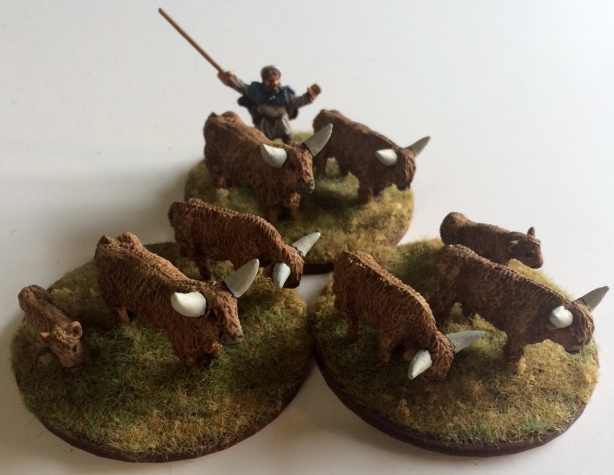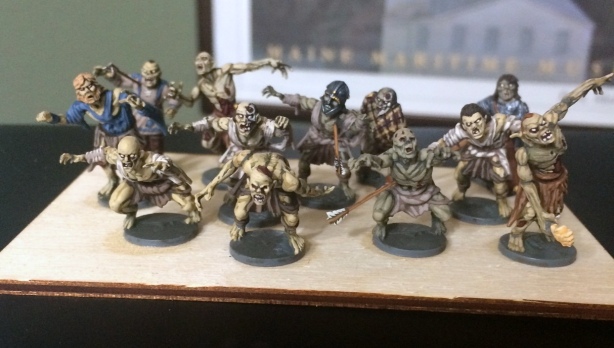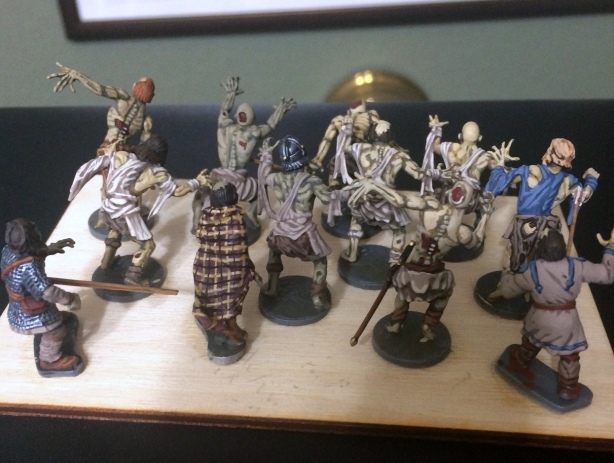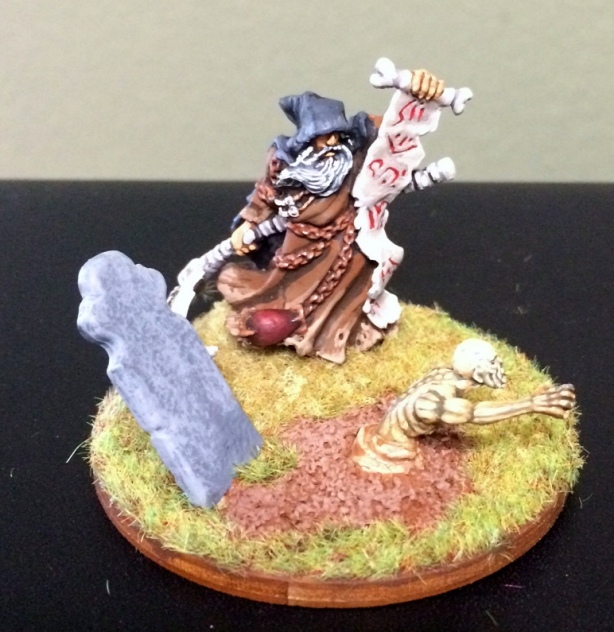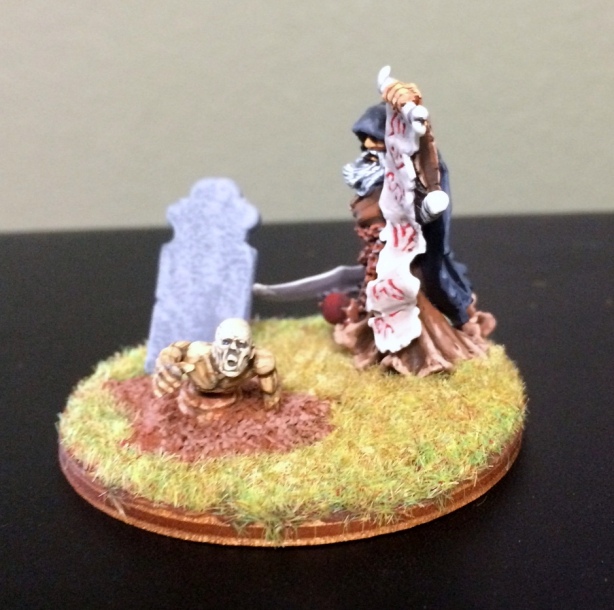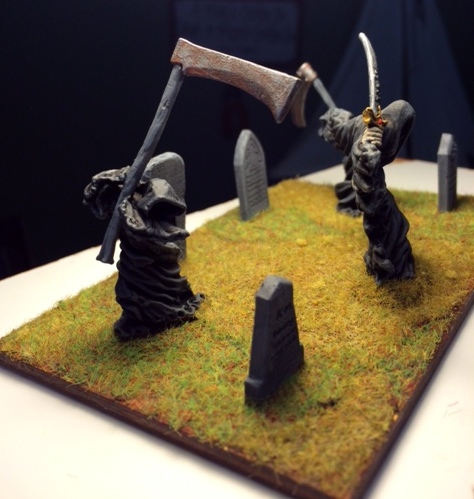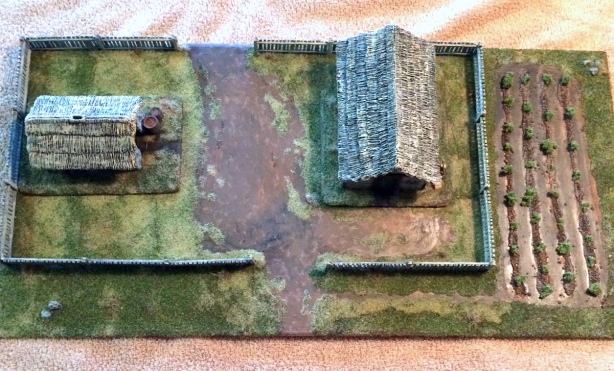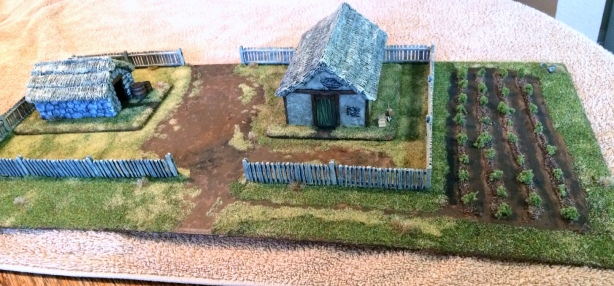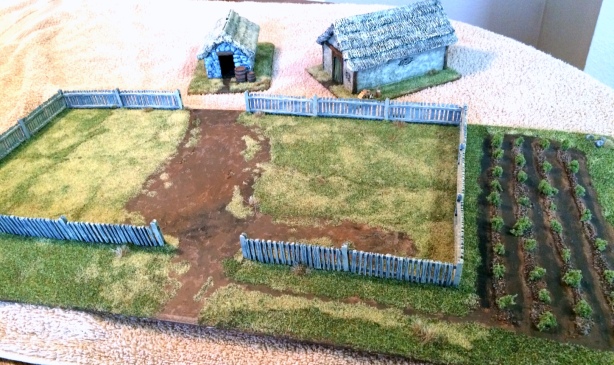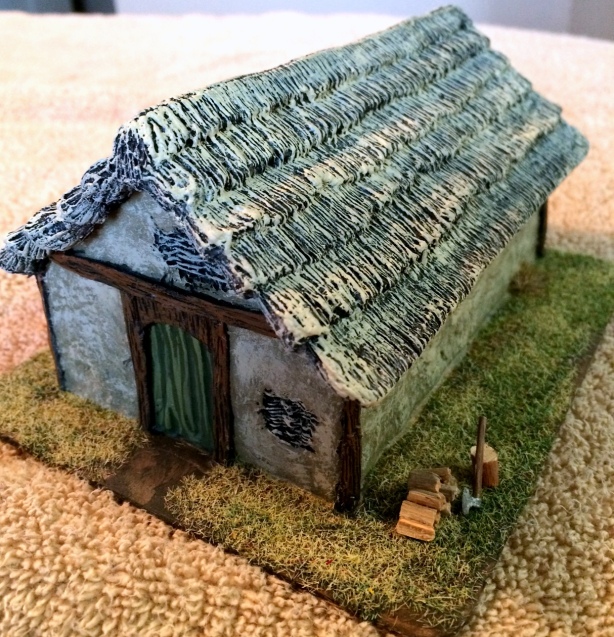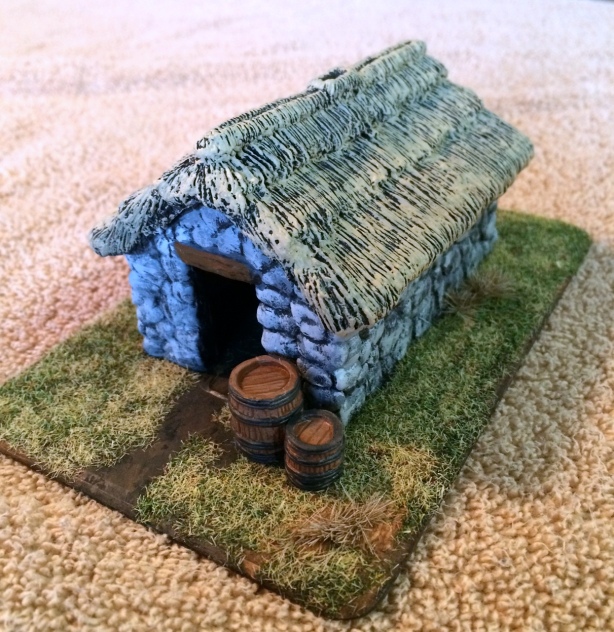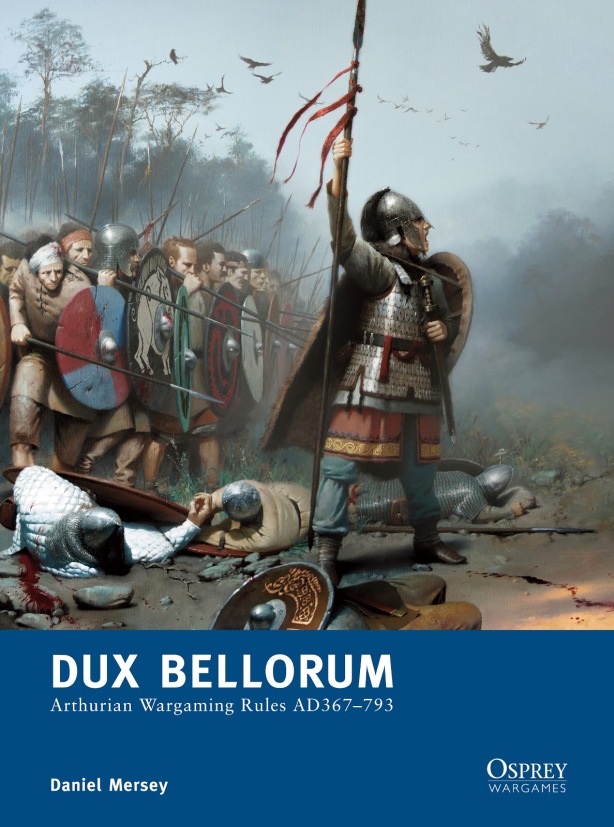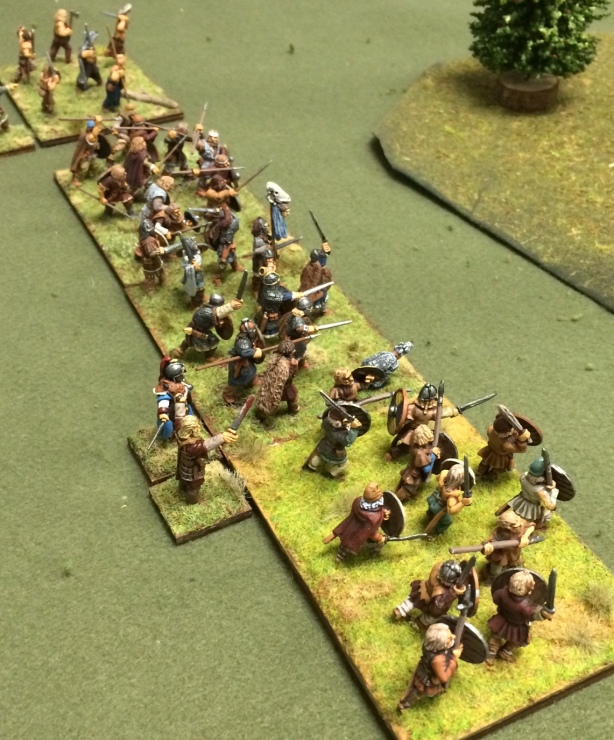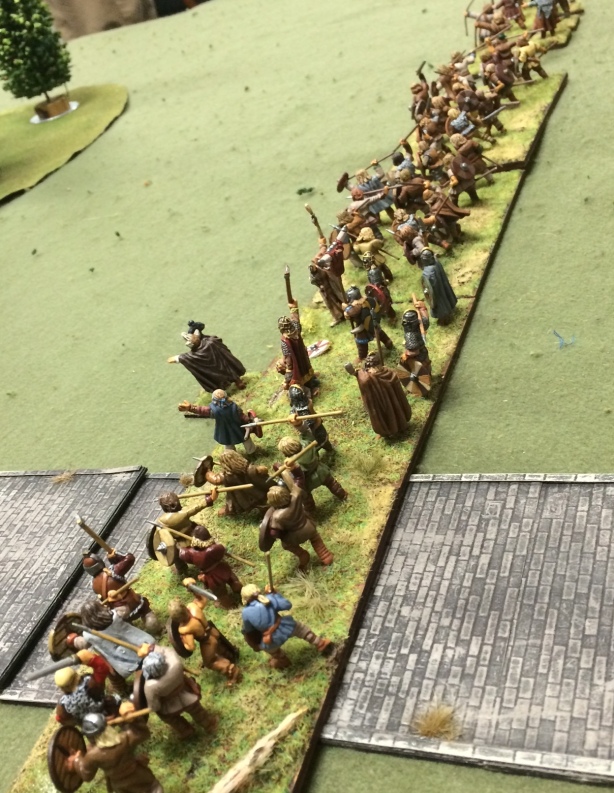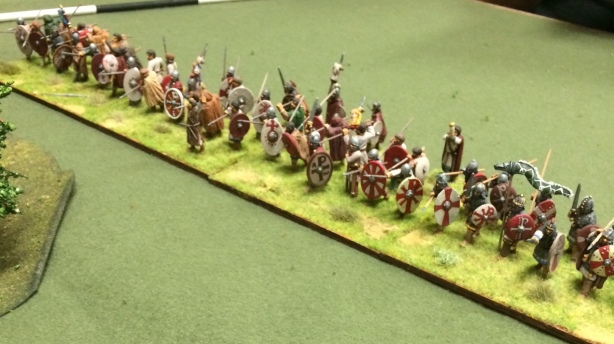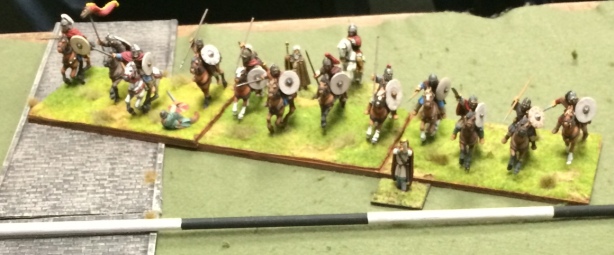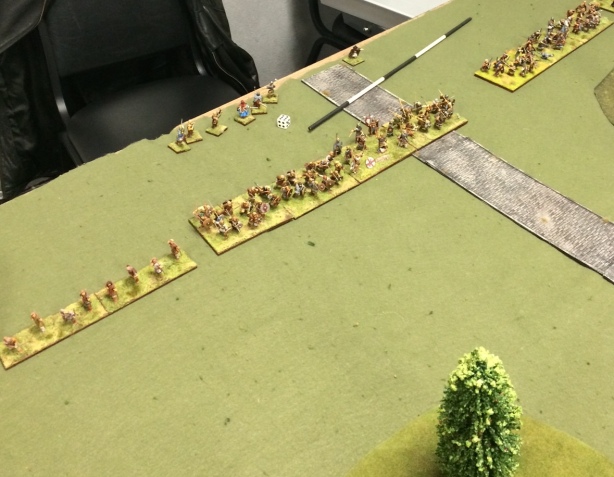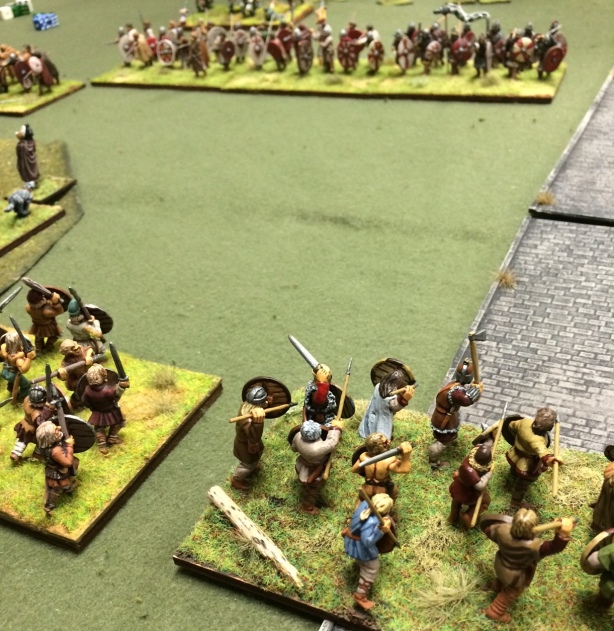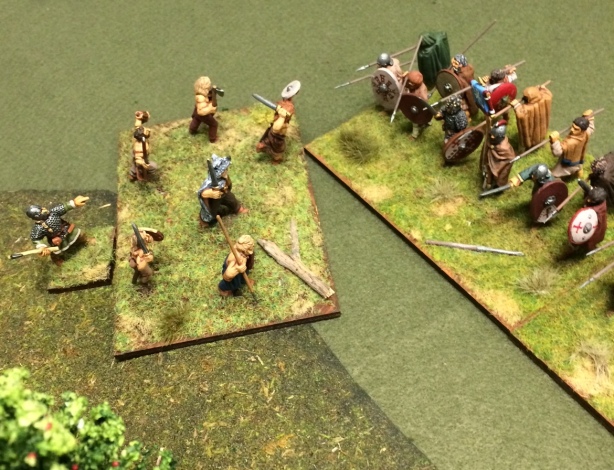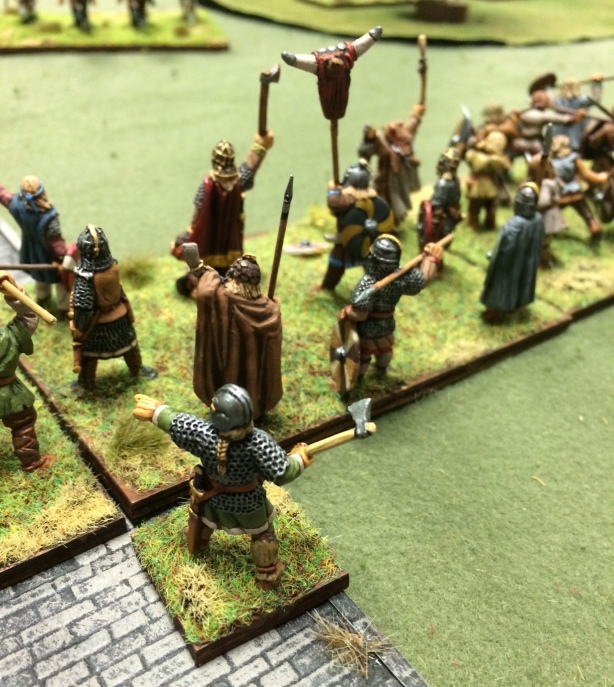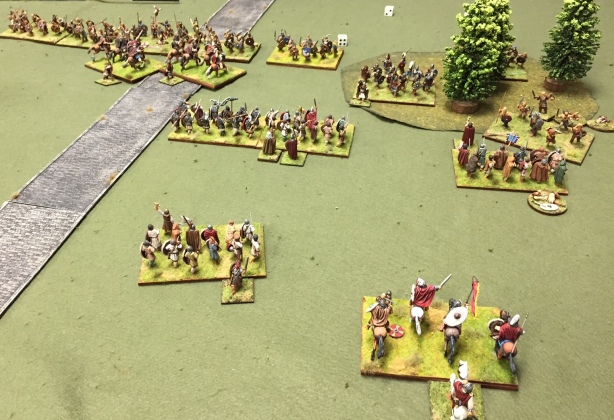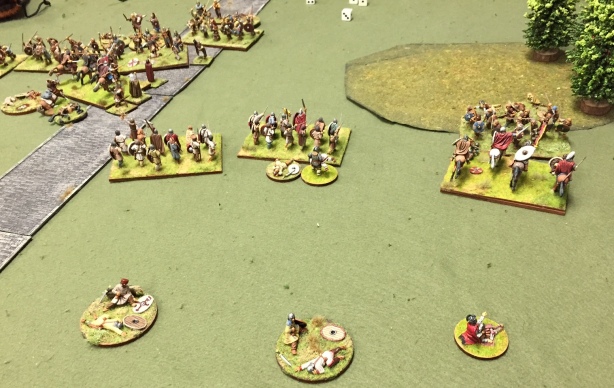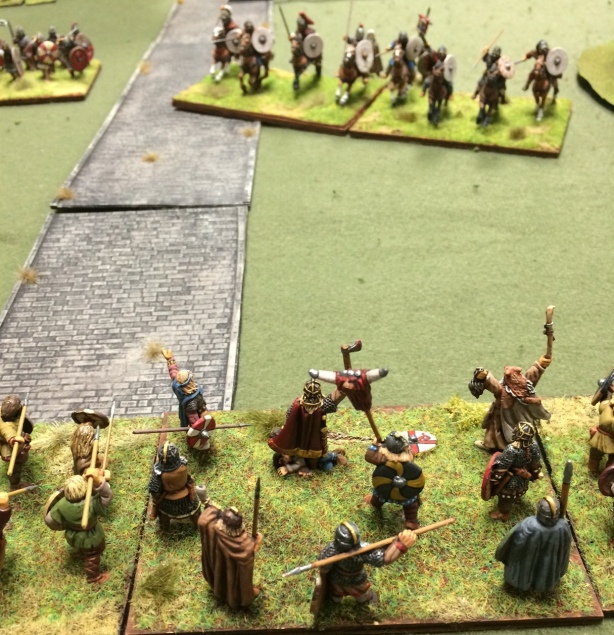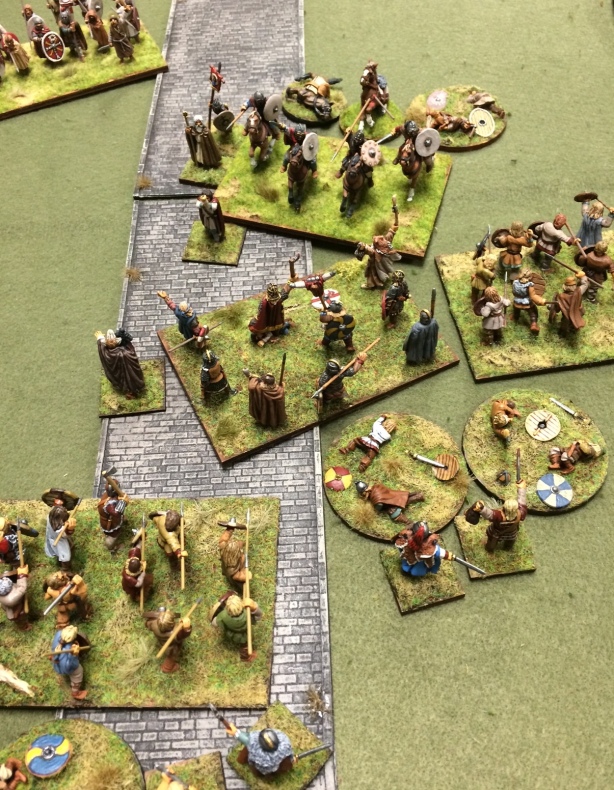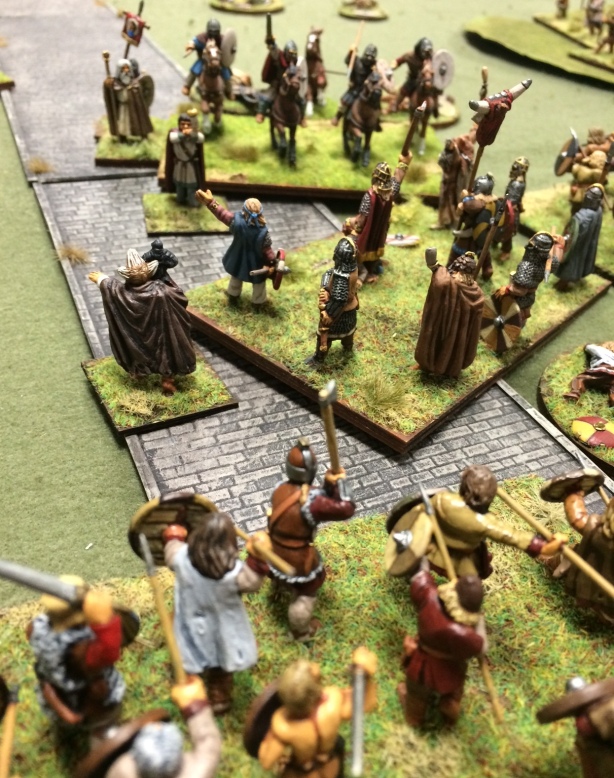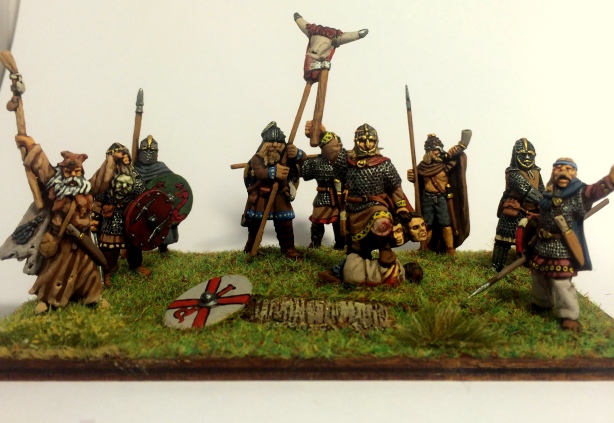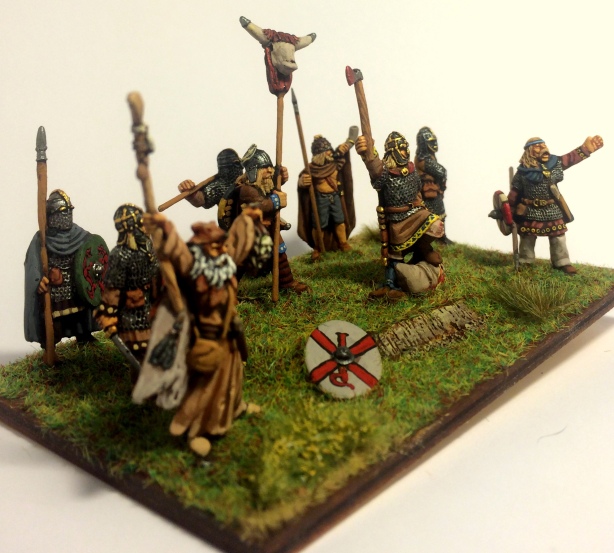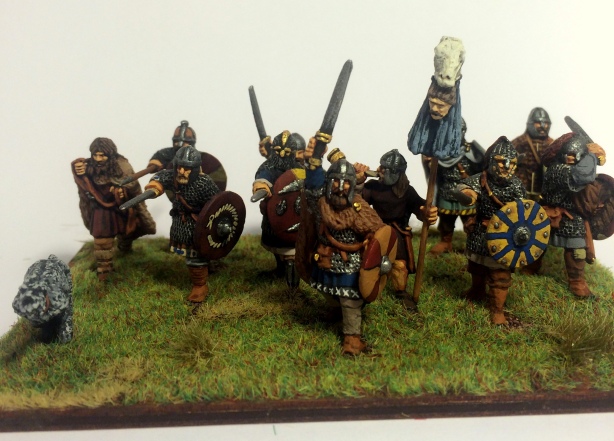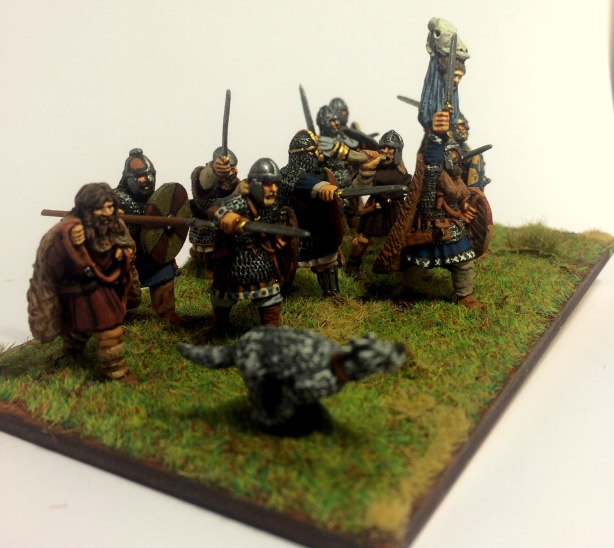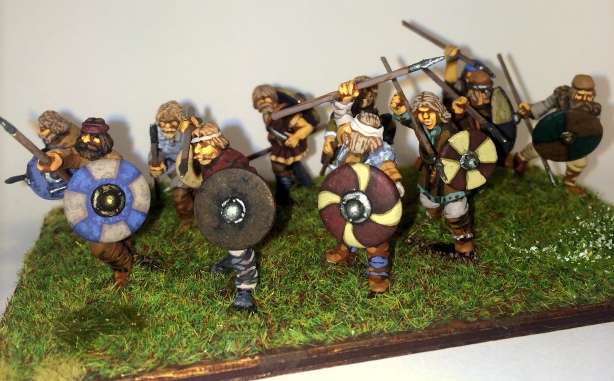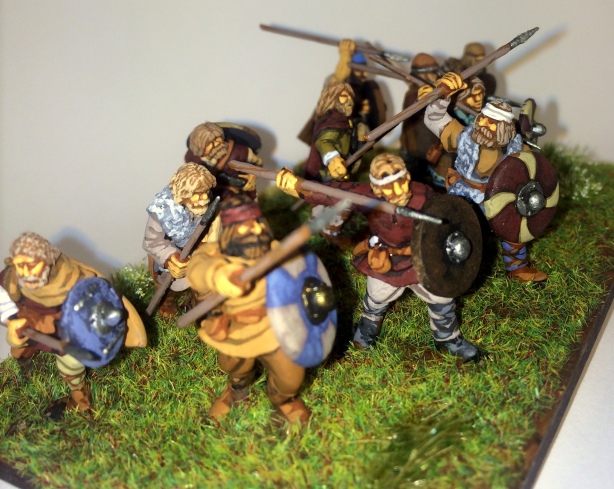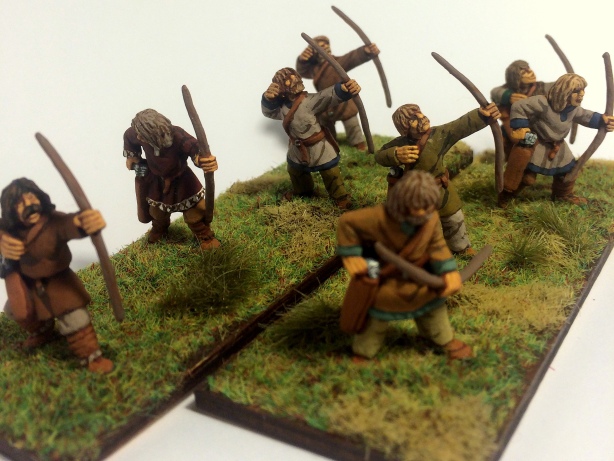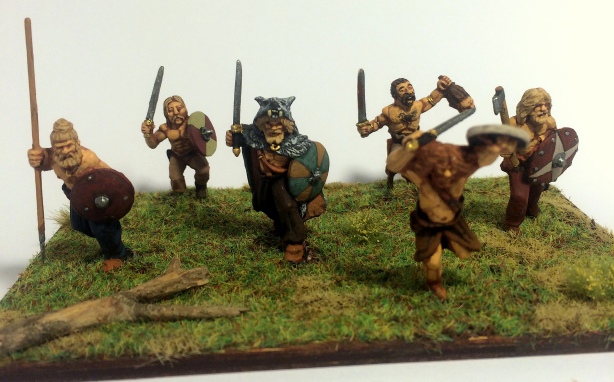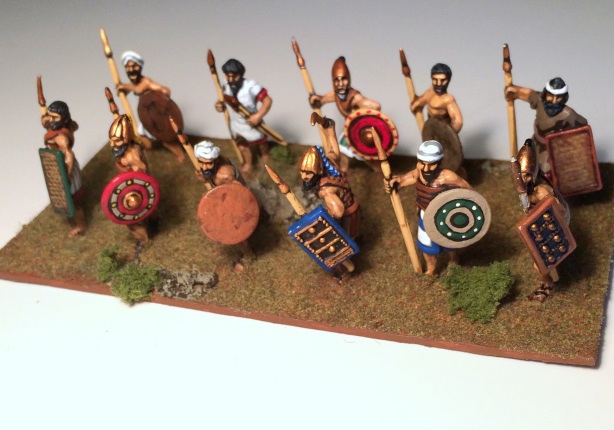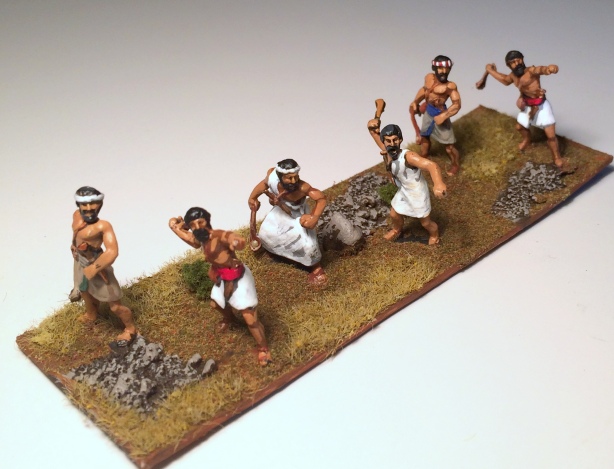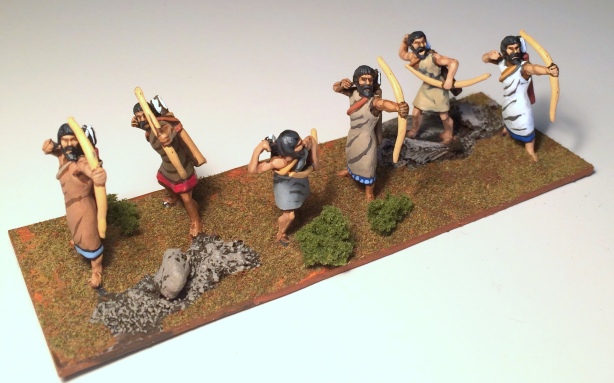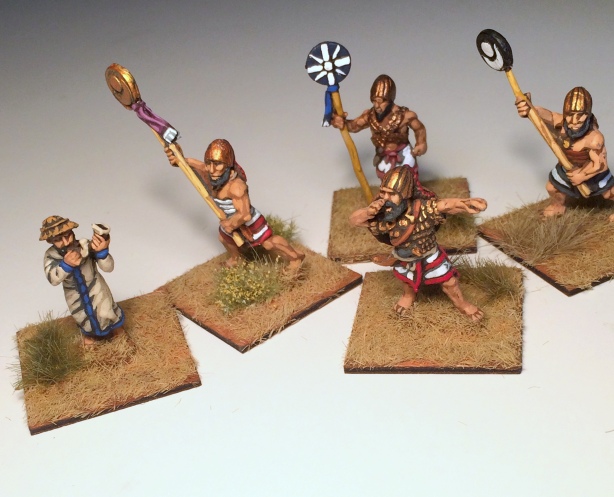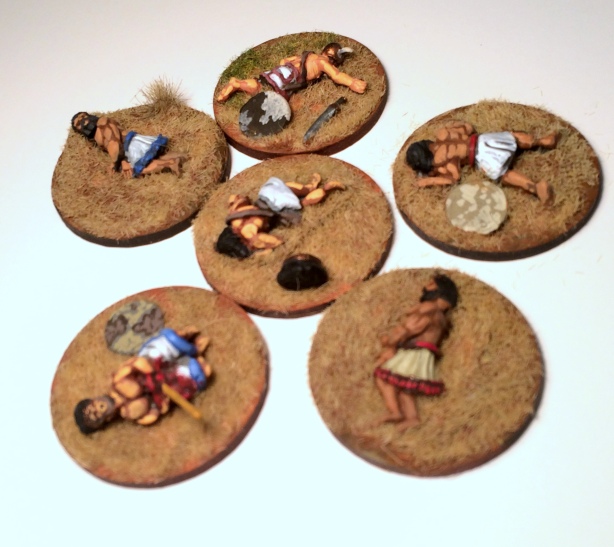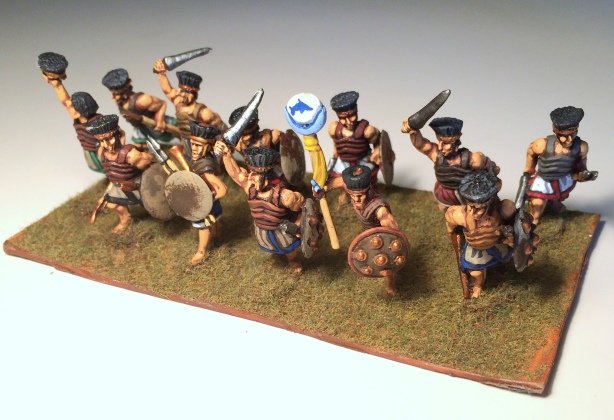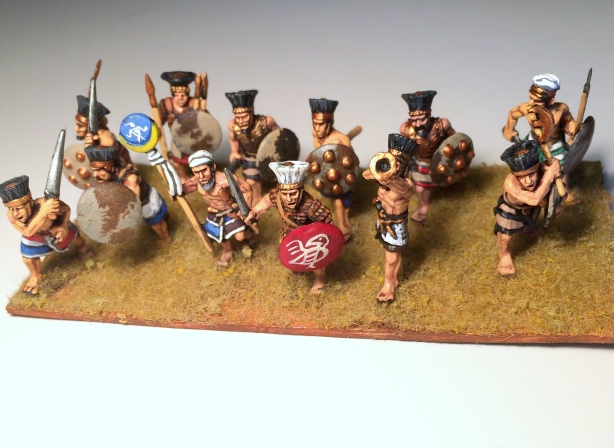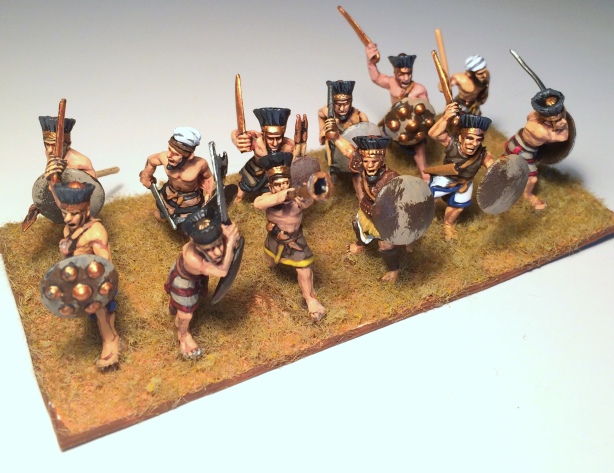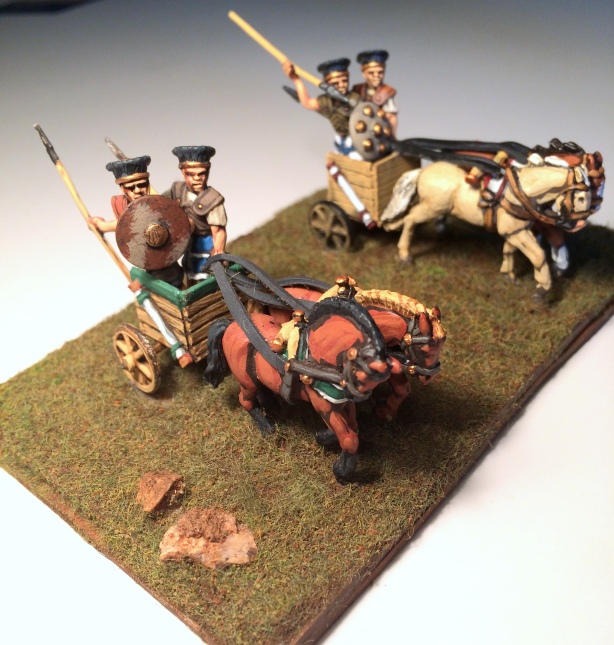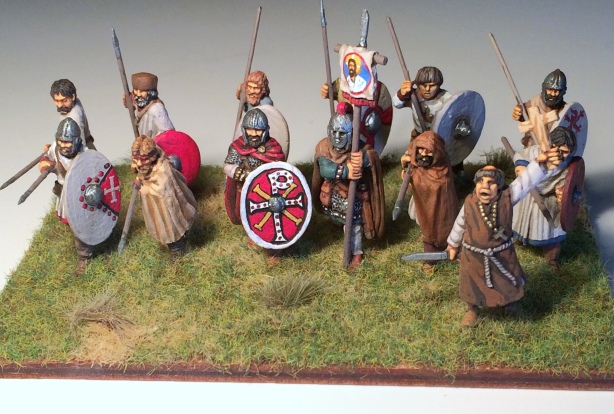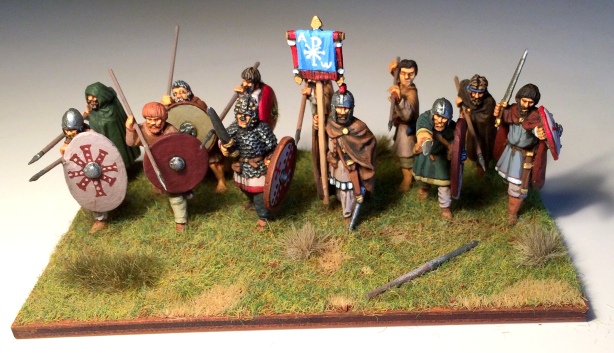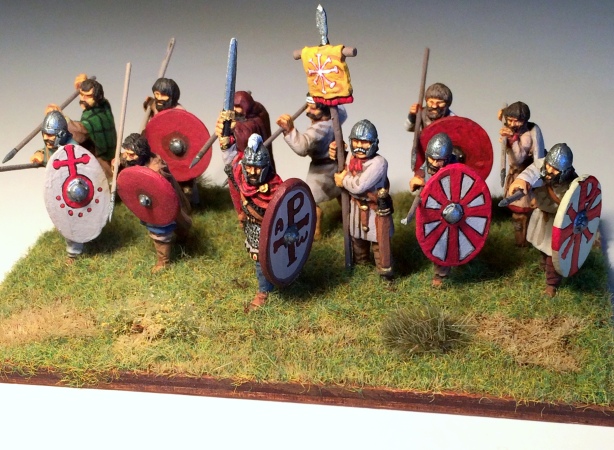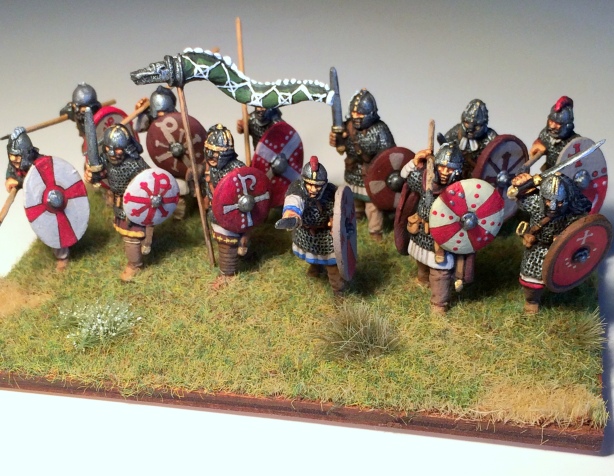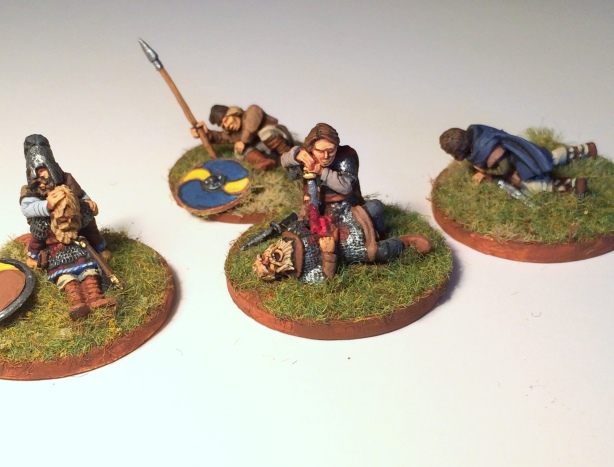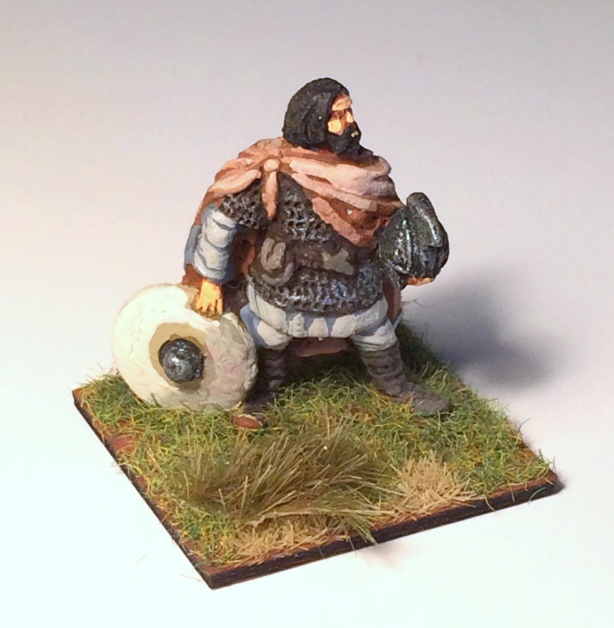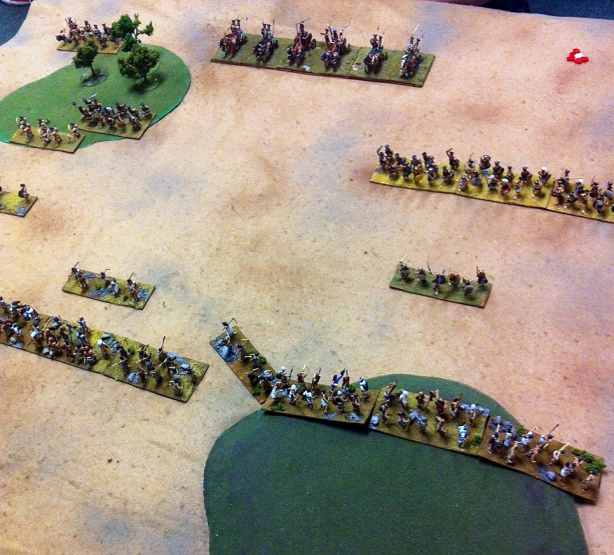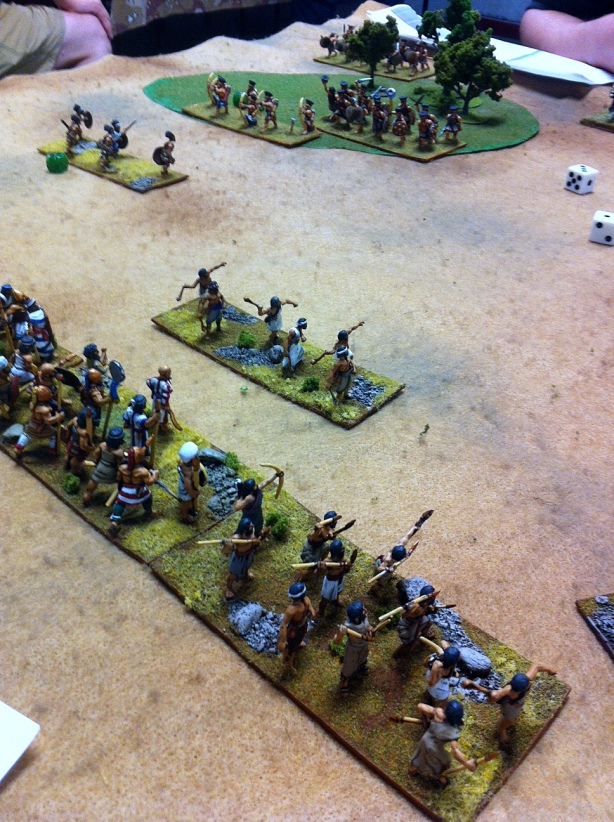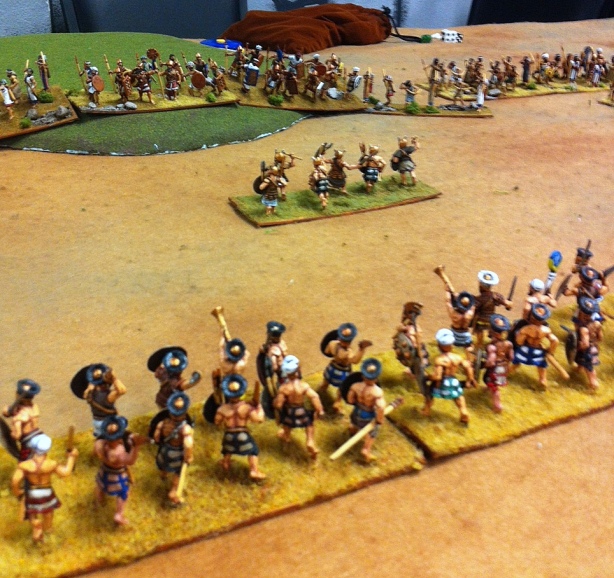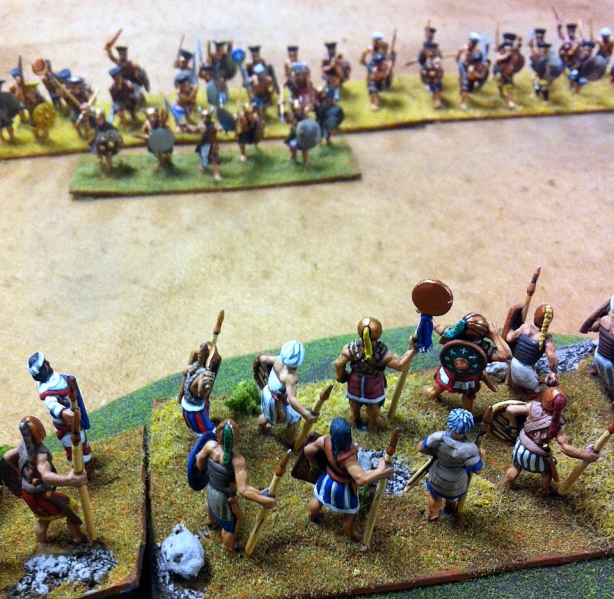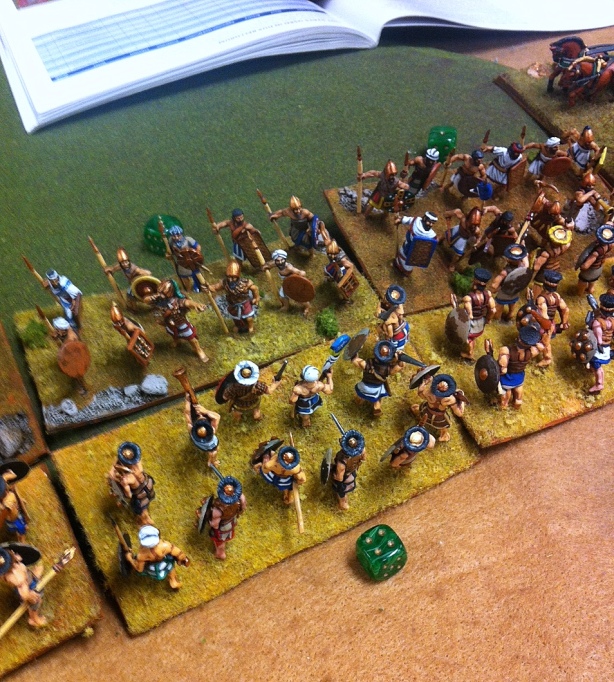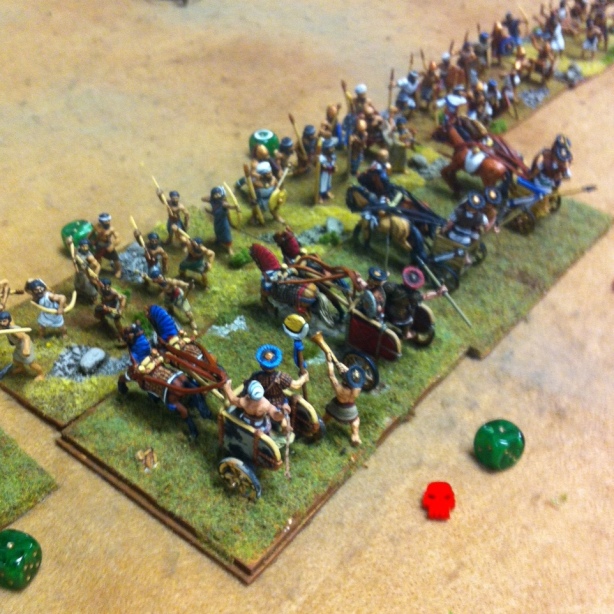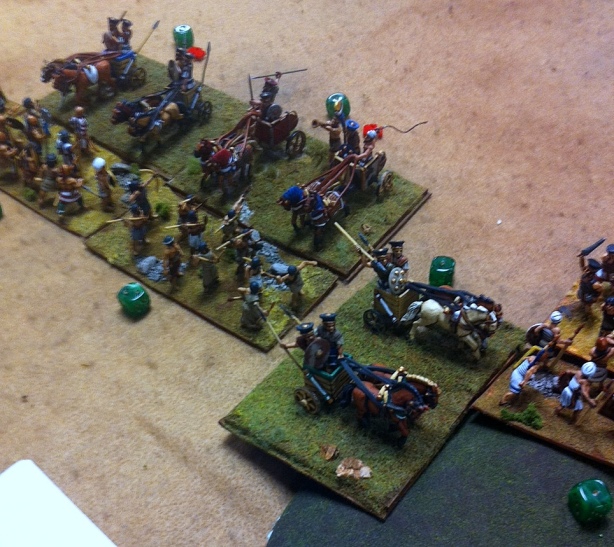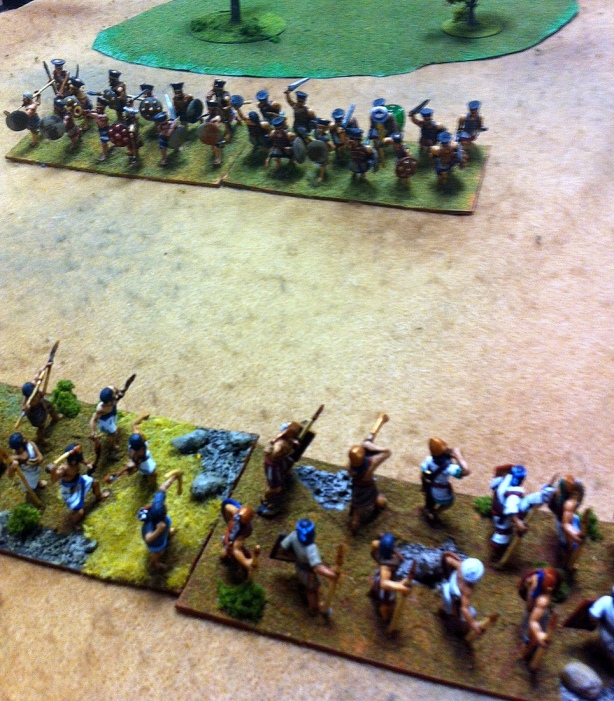I recently made up a number of terrain features to add to my games. I find it so much more satisfying to have some nice-looking terrain pieces in a game, and they are fun to make.
First up are two small pieces of broken or rough terrain. These are both roughly 6″ by 3″ and are based on thin sheets of plywood which have been cut to shape and sanded down. One of the pieces has a small pool of water made with Woodland Scenics Realistic Water. The rocks and wood were found in a field and I just left them their natural colors. I posed some 28mm figures next to them to give them some scale, but you could easily use this for any other scale.
Next up is a small pond made the same way, using the Woodland Scenics water. I’ve found that it looks best when you pour 2 or 3 layers on it, but you have to be patient because each layer takes many hours to dry. I really went nuts with this stuff, creating a bunch of river sections and going through nearly the entire bottle. The river is not quite finished yet, so I’ll include some photos in a later post.
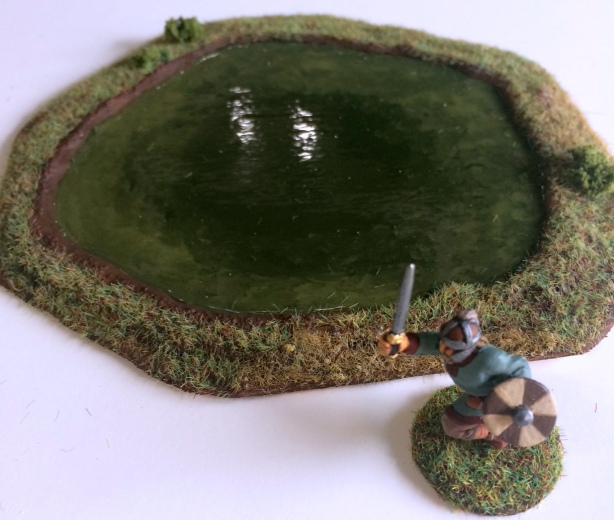
Next are some farm fields. I made all of these using a hot glue gun to lay down the rows, then covered the entire field with a layer of sand. The enclosed field with a stone border was made by gluing pebbles together. The one with the wattle fence came from Renedra.
Next up is the forest. I don’t know about you, but when I see a piece of felt on the table with three trees on it, I have a hard time imagining that it represents a forest. I wanted to have something that indicated the density of forest while still allowing the players to easily move their units through it. Here’s what I came up with.
First, I created the base of the forest. This is a large piece of thin plywood that was 12″ x 12″ and then cut to shape and sanded. On this, I put a layer of flocking (red flocking to represent dead leaves, then a layer of forest debris and underbrush). I was careful to make the flocking relatively light on the areas where the trees would be so as not to impede their placement. Around these areas I put some thicker brush, rocks, and fallen logs. When the stands of trees are placed, this debris will act as a kind of border and will (hopefully) add to the sense of density for the forest.
The trees were made with wooden dowels of various thickness, over which I made the “bark” with the hot glue gun, and then attached clumps of foliage from Woodland Scenics. The trees were then attached to four stands. Two of the stands were roughly 6″ x 6″ and the other two were about half that. The large stands got 6 trees each and the smaller ones got 3. The stands, in turn, got the same underbrush treatment as the base.
The result of this is that you can set the forest base down and set the tree stands on them. When troops move through, you simply remove tree stands. They also make nice scatter terrain on their own. I’m thinking of making at least 4 of these forest sections so that I cover a fairly large area.
And last but not least, I have a herd of cattle, which is not really terrain, of course, but is a part of the landscape. I plan to use these for cattle raid scenarios as objectives. The cattle and herdsman are all from Gripping Beast.
